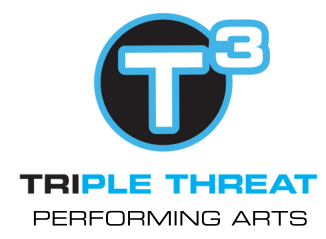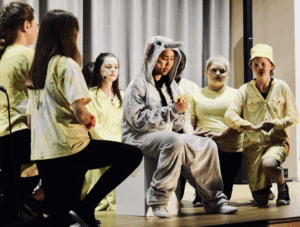Introduction
Clog dancing, with its rhythmic footwork and lively energy, is a dance tradition that has captivated audiences for centuries. Originating from various regions across Europe, clog dancing has evolved into a vibrant and entertaining art form. Here we’ll explore the history, techniques, and cultural significance of clog dancing and provide tips for those interested in learning and enjoying this dynamic dance tradition.
The Origins of Clog Dancing
Clog dancing originated in several European countries, including England, Scotland, Ireland, and the Netherlands. The term “clog” refers to the wooden shoes traditionally worn by dancers, which dancers often used to amplify the sound of the dance. These wooden shoes, also known as clogs, were practical footwear for workers in agricultural and industrial settings, but they also played a crucial role in the development of the dance style.
In England and Scotland, clog dancing was closely associated with the working class, particularly in mining and agricultural communities. The rhythmic tapping of the wooden shoes on hard surfaces provided a natural accompaniment to the lively folk music of the time. In Ireland, people embraced clog dancing as a popular form of entertainment during social gatherings and festivals. In the Netherlands, performers often included the dance in traditional celebrations and ceremonies.
Techniques and Styles
Clog dancing features energetic and rhythmic footwork. Dancers wear wooden shoes designed to produce a distinct, percussive sound as they strike the floor. The techniques and styles of clog dancing can vary depending on the region and cultural influences, but some common elements include:
Basic Footwork
The foundation of clog dancing lies in its basic footwork. Dancers typically perform a series of intricate steps, including taps, shuffles, and heel-clicks, all while maintaining a steady rhythm. The footwork is often performed in sync with the music, creating a harmonious blend of sound and movement.
Rhythmic Patterns
One of the most distinctive features of clog dancing is its rhythmic patterns. Dancers often use their wooden shoes to create complex rhythms and syncopations, adding a dynamic and lively element to the performance. The rhythmic patterns can range from simple beats to more intricate sequences, depending on the skill level and style of the dancer.
:max_bytes(150000):strip_icc()/GettyImages-91536992-599df15768e1a200107621d8.jpg)
:max_bytes(150000):strip_icc()/GettyImages-91536992-599df15768e1a200107621d8.jpg)
Traditional vs. Contemporary Styles
While traditional clog dancing remains popular, contemporary styles have also emerged, blending elements from other dance forms and musical genres. For example, some modern clog dancers incorporate elements of tap dance, step dance, or even hip-hop into their routines. This fusion of styles has helped to keep clog dancing fresh and relevant, attracting new audiences and enthusiasts.
The Cultural Significance
Clog dancing holds a special place in the cultural heritage of many countries. It is often associated with regional festivals, celebrations, and community events, where it serves as a vibrant expression of local traditions and customs. Moreover addition to its role in cultural celebrations, clog dancing also serves as a means of preserving and promoting traditional dance forms.
In England and Scotland
England and Scotland, clog dancing is often performed as part of folk festivals and community events. It is a popular attraction at events such as Morris dance festivals, where dancers showcase their skills in traditional wooden shoes. The dance is also featured in historical reenactments and heritage celebrations, helping to preserve the cultural legacy of these regions.
In Ireland
In Ireland, people closely associate clog dancing with traditional Irish music and dance. Performers often present it alongside other traditional dances, such as jig and reel, making it a key component of Irish dance performances. Clog dancing also plays a role in cultural festivals and competitions, where dancers demonstrate their skills and compete for recognition.
In the Netherlands
In the Netherlands, clog dancing is an integral part of traditional Dutch culture. Performers often showcase clog dancing during festivals and parades, highlighting the vibrant and festive spirit of Dutch celebrations. Cultural exhibitions and historical presentations also feature the dance, emphasizing its significance in Dutch heritage.
Getting Started with Clog Dancing
If you’re interested in trying your hand at clog dancing, there are several ways to get started. Whether you’re a complete beginner or an experienced dancer, here are some tips to help you get the most out of your clog dancing experience:
Find a Local Class or Group
Many communities have clog dancing classes or groups that welcome beginners. These classes provide an opportunity to learn the basics of clog dancing, including footwork, rhythm, and technique. Joining a local group can also provide a sense of community and support as you develop your skills.


Invest in Proper Footwear
To get the authentic clog dancing experience, it’s important to invest in a pair of traditional wooden shoes. These shoes are designed to produce the distinctive sound associated with clog dancing and provide the proper support for the dance. You can find wooden shoes at specialty dance stores or online retailers.
Practice Regularly
Like any dance form, clog dancing requires practice to master. Regular practice will help you improve your footwork, rhythm, and overall performance. Consider setting aside time each week to practice and refine your skills, and don’t be afraid to experiment with different rhythms and styles.
Enjoy the Experience
Clog dancing is meant to be a fun and energetic activity, so don’t forget to enjoy the experience. Whether you’re dancing solo or performing with a group, embrace the lively spirit of clog dancing and have fun with your movements.
Conclusion
Clog dancing is a dynamic and engaging dance tradition with deep cultural roots and a rich history. Its energetic footwork and distinctive rhythms make it a unique and enjoyable form of dance. Whether you’re interested in preserving traditional dance forms. Exploring contemporary styles, clog dancing offers a vibrant and rewarding experience for dancers of all levels. So lace up your wooden shoes and join the lively world of clog dancing with T3 Triple Threat —where tradition meets fun and rhythm.




